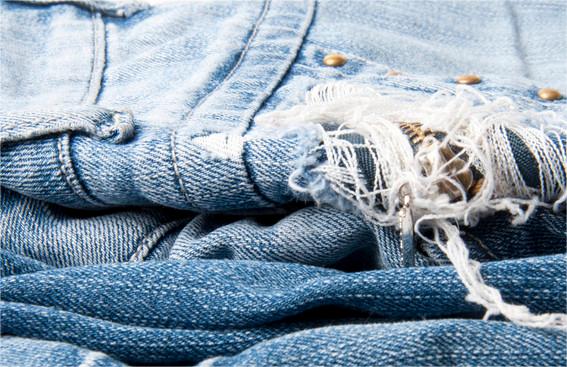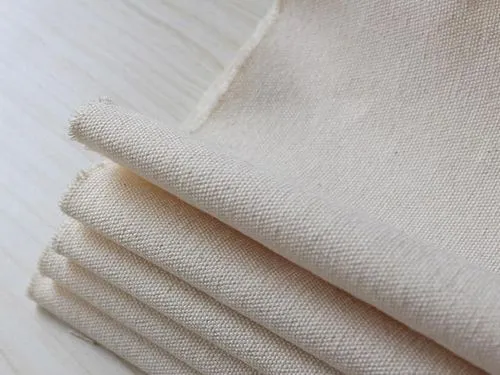Have you ever seen the scene pictured below while watching a sporting event? Isn’t it a great body? Isn’t it wild? Today, we’ll focus on the clothes, not the athletes’ looks. The clothes were “violently” torn during the game. This happens to us in our daily lives. It happens when we are driving or doing other activities. The embarrassing situation of clothes tearing is unavoidable. So how much “violence” does a garment have to withstand before it is considered acceptable?
This involves a textile testing project. Tear strength evaluates fabric toughness and wear durability. These are important indicators. Textile testing assesses basic mechanical properties. These properties include the strength of fabric when breaking and tearing. They also include the top strength, swelling strength, and seam performance..
1. Basic concept
In wearing, some parts of the fabric will often suddenly tear. For example, clothing can get hooked by sharp parts. Also, squatting pulls on the fabric in some areas. These pulls put the fabric under the maximum load and it breaks. Tearing is the term for this action. Tear strength measures a fabric’s ability to resist tearing. It measures tearing along the direction of split or break during use. It tests the ability to pull off the warp or weft yarn surface. People know these types of tearing as “warp tear” and “weft tear.”
2. Destruction mechanism
In the tearing process, fabric yarns stretch. For the whole, tearing breaks the yarns one by one. Tearing forms a force triangle. The yarns’ nature decides the fabric’s tearing strength. A fabric’s tearing strength is roughly proportional to its yarns’ strength. The greater the yarns’ elongation at break, the larger the force triangle. Also, the more stressed yarns, the greater the tearing strength.
3. Test standard
Different textiles tear in various ways during use. Internationally, the most common tests measure fabric tear strength. They use the pendulum, tongue, and trapezoidal methods. These three methods are also used in China’s national standards. In addition to the three above methods, some countries also use the wing, rectangle, and nail methods.
4. Test methods
The main tests for tearing strength are the single-seam tearing test. It has two forms: the trouser-shaped specimen method and the wing-shaped specimen method. There is also the double-seam tearing test, which uses the tongue-shaped method. There are also the trapezoidal tearing test and the impact pendulum test.
① Trousers method.
Scope of application:
The rules apply to woven fabrics and nonwoven fabrics. They do not apply to knitted or woven elastic fabrics. They also do not apply to fabrics that may tear transfer. These are fabrics with a high anisotropy.
Testing Principle:
Cut the specimen to the specified size. Then, clamp the two legs of the trouser-shaped specimen. Its incision line should be straight between the two clamps. Apply the tensile force in the direction of the incision by turning on the instrument. Record until torn to the specified length of the tearing strength. Then, find the average of the highest peak and the lowest peak in the specified area. This gives the tearing strength.
Test Methods:
Fixed speed stretching: Stretching speed 100mm/min, spacing length 100mm.
②Wing method
Scope of application:
It is mainly used to test the tear resistance of various textile fabrics. This is especially true for decorative and industrial fabrics. Examples include canvas, tents, and work clothing. It is also for air or liquid filtration materials.
Testing Principle:
The wing method clamps the specimen. It uses both wings tilted in the fixture of the strength machine. It records the average tearing force value of the tearing to the specified length. The tearing strength of the wing method is like the trapezoidal method. Only the angle is different. The angle shows how many yarns resist tension. This makes the final result incomparable to the trapezoidal method.
Test Method:
Fixed speed stretching Spacing length 100mm, stretching speed 100mm/min.
③ Tongue-shaped method
Scope of application:
It is widely used for many fabric types. These include natural fibers, like cotton, wool, and silk. They also include man-made fibers, like nylon and polyester. It is also used for blended fabrics. People use it for apparel, home furnishing, and industrial fabrics.
Testing Principle:
We make two parallel cuts in a rectangular specimen to form a tongue-shaped specimen. Load the specimen into the equipment clamp. Keep the two incision lines straight and parallel. Pull in the direction of the incision to simulate two parallel tearing forces. Record the tearing strength until the tearing to the specified length. An automatic electronic device then calculates the tearing strength.
Test Method:
Constant speed stretching 100mm spacing length, 100mm/min stretching rate.
④Trapezoidal method
Scope of application:
It is suitable for testing thick or strong fabrics. These include woven, non-woven, denim, and industrial fabrics.
Test principle:
Draw a trapezoid on the specimen and cut a notch on its short side. Clamp the two non-parallel sides of the trapezoid with the strength tester’s clamp. Put the notch in the middle of the two clamps. Apply a force that increases continuously to the specimen. This makes the tear spread along the width. Then, find the average maximum tearing force.
Test method:
Fixed speed stretching: stretching speed 100mm/min, spacing length 25mm.
⑤ Impact Pendulum Method
Scope of application:
It applies to woven and non-woven fabrics. But, it does not apply to knitted or elastic fabrics. Also, not to fabrics that may produce tear transfer or have high anisotropy.
Test Principle:
After cutting the specimen to the specified size, clamp it on the fixture. Then, cutting an incision releases the pendulum at its highest potential energy. When the pendulum leaves the fixture, the specimen tears along the incision’s direction. We then measure the tearing strength.
Test method:
Gravity drops the hammer. It then suddenly hits the specimen, tearing it.
For the above three test methods, the tearing methods and principles are different. So, the triangles they form differ and their results are not comparable. These tearing strength test methods have limits. They include the impact pendulum and the trouser method. They limit the required sample size. The trapezoidal method is more widely applicable and gets test results better. But, their principles and testing methods differ. When deciding which one to use, consider textile standards and specific needs.
5. Testing equipment
The ElmenGuide Intelligent Tearing Strength Tester is also called the pendulum tearing instrument. It uses a pendulum tearing method. The pendulum falls from a certain height, turning potential energy into kinetic energy. This cuts a slit in the fabric. Then, it measures the force needed to tear the fabric to a certain length. This measures the fabric’s tearing performance. SmartPull Tensile Tester is a machine for textiles, leather, and footwear. It has two types of models: single-arm and double-arm. They test the tear strength of trousers, wings, tongues, and trapezoids.
6. Judgement of test results
In general, higher tearing strength means stronger resistance to tearing. It also means better fabric durability. However, the fabric’s intended use determines the required tear strength value. For example, fabrics for outdoor equipment or industry may need higher tear strength. But, upholstery or some clothes may not need such high tear strength. It is important to note that data from different test methods can vary a lot. This is true even for the same fabric. So, to compare data, only compare data from the same test conditions.
7. Factors affecting tear strength Raw materials
Raw materials
Raw materials vary significantly in their resistance to tearing and stretching.
Properties of the yarn
Density of the yarn:
Thicker yarns are more resistant to tearing and tensile forces.
Whether the yarn is filament or staple:
You can make filament into yarn for textiles. Twisting staple fiber is necessary to make yarn. So, staple fiber is weaker than filament.
The twist of the yarn:
The twist can make the staple fibre yarn or filament hold together better. It creates cohesion, and improves strength and elasticity. So, it makes the fabric harder to tear. However, there is a twist limit. Too much twist can’t improve strength and elasticity. It makes the yarn brittle and reduces strength and elasticity.
Yarn elongation at break:
The fabric’s tearing strength is about proportional to the yarn’s breaking strength. It’s closely related to the yarn’s breaking elongation. When the yarn’s breaking stretch is large. Many yarns bear the force triangle’s tearing strength. So, the fabric’s tearing strength is large.
Fabric organisation
When other things are the same, the plain weave has the lowest tear strength. It is of the three original tissues. The satin weave has the highest, and the twill weave is in between. That is, plain < twill < satin.
Fabric density
The effect of fabric density on tear strength is complex for low-density fabrics. As density rises, tear resistance increases. But, for higher densities, as density rises, tear strength decreases. The most critical factor is that tissue and density affect tear strength. They do so by influencing how slippery the yarn is.
Fabric Finishing Processes
Brushing process:
Brushing polishes the fabric surface. It makes short, neat tufts on the fabric. This tears apart the yarn structure on the fabric’s surface. The yarn’s strength then decreases.
Resin Finishing:
For cotton fabrics, viscose fabrics cause yarn elongation to decrease. They also increase fabric brittleness and decrease fabric tear strength. The extent of these effects varies with the type of resin and processing method.
Coating finishing:
The fabric has a layer of chemical paste on its surface. This paste gives the fabric many functions, like downproofing and waterproofing. But, the paste fixes the fabric’s warp and weft yarns in place. They can’t move. This reduces the fabric’s tearing strength. So, we will test the strength of the coating before a big drop in strength. This is similar to when one must assess tearing.
8. Improvement measures to enhance the tearing strength
Blends with high performance fibres:
Improve the tearing performance of fabrics by increasing yarn strength.
Increasing the warp and weft density of the fabric will increase the wave height:
Add more yarns to the force triangle during tearing. Do this by increasing the weaving shrinkage. Also, increase the number of yarns under force. This will improve the tearing performance of the fabric.
Change the fabric organisation:
Improve the yarn movement in the tissue during the tearing process. Do this by increasing the number of yarn roots under force. This will boost the fabric’s tearing performance.
Use of finishing such as silicone oil or soft flakes:
Reduce the static and dynamic friction between the yarns. This increase the tearing strength, but using too much can lead to failure.
For more information on textile testing methods/standards
or textile testing machines, contact us:
What’s App: +86 180 2511 4082
Tel: +86 769 2329 4842
Fax: +86 769 2329 4860
Email: medium@chiuvention.com




